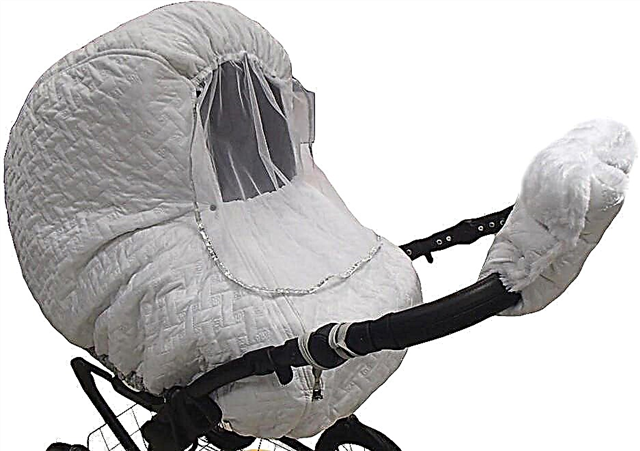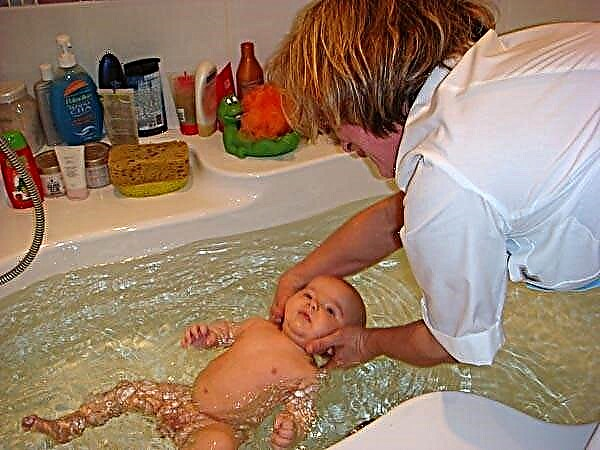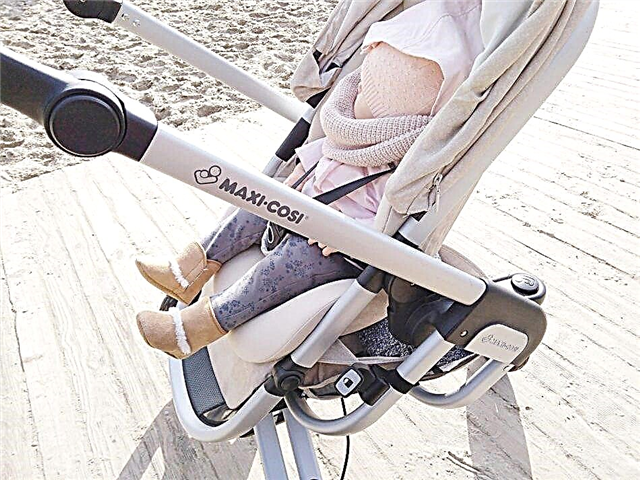Myopia in children is the most common type of refractive error, due to which there is a decrease in distance visual acuity with normal or decreased near acuity.
Ophthalmologist consultation, carried out in a timely manner, allows both to differentiate false myopia from true, and to stop the progress of the disease and the appearance of complications. After all, their occurrence entails a decrease in visual functions up to blindness.
Uncontrolled myopia in a child can almost always lead to complications that can be eliminated and / or prevented only by a number of surgical methods.
Depending on the methods of treating myopia in children and adults, therapy can be divided into conservative and operative.
Conservative treatment methods
False myopia
It should be noted that in school-age children, accommodation spasm (false myopia) is most often revealed. Treatment of this visual acuity disorder is aimed at eliminating precisely the spasm of the ciliary muscle - a condition in which it is most tense.
To do this, complete muscle relaxation should be achieved by medication, instilling cycloplegics or mydriatics according to the recommended scheme.
At the first visit to the doctor, the child is prescribed a course of medication cycloplegia.
This technique is also called "atropinization".
In the modern world, despite the development of the pharmaceutical industry, Atropine is the most powerful and effective of all the declared cycloplegics. The undesirable toxic effect arising from its use can be well eliminated with 1 glass of milk taken orally after each eye instillation.

Mild myopia, detected during the initial examination, is often provoked by a spasm of accommodation. Therefore, by achieving complete relaxation of the ciliary muscle, it is possible to restore visual acuity up to 100%. In the case of undiagnosed false myopia, prolonged tension of the ciliary muscle leads to certain organic changes in the structure and functions of the eye, as a result of which conditions are formed for the transition of accommodation spasm to true myopia, and, as a consequence, the progression of the disease.
Short-acting mydriatics (Midriacil, Irifrin) are used in patients with an already established spasm of accommodation. Apply dropwise at night in each eye for 15 days.
There is another scheme in which the drugs are instilled every other night, but also within 15 days. This regimen is used in drug-sensitive patients whose pupil remains wide until the middle of the next day.
For the successful elimination of false myopia in children, in addition to conducting courses of therapy with short-acting mydriatics used at night, and atropinization, it is recommended to adhere to a certain visual regime. For every 45 minutes of work, there should be at least 15 minutes of rest, during which one or two exercises of visual gymnastics should be performed.
True myopia
Glasses and contact lenses
The most common and simplest way to deal with true myopia in a non-operative way is to use spectacle or contact vision correction.
Glasses are used in young children. Lenses are beginning to be actively used in children 10 - 12 years old. However, it should be noted that contact vision correction is sometimes carried out at an earlier age, but under the strict supervision of parents.
 Prescribing glasses is preferable for children, since there is no contact with the structures of the eye, therefore, there is no possibility of infection.
Prescribing glasses is preferable for children, since there is no contact with the structures of the eye, therefore, there is no possibility of infection.
Contact lenses enable the child to engage in active sports, since they do not limit the view and, most importantly, do not change their appearance.
This is especially important for adolescents who do not want the offensive nickname "myopic", "nerd", "bespectacled" to be attached to them.
The selection of both lenses and glasses for the child is carried out only after reaching cycloplegia, in the absence of accommodation spasm, installing glasses corresponding to one hundred percent correction.
The appointment of a weaker correction forces the ciliary muscle to work more intensively, and the resulting spasm of accommodation allows myopia to progress.
One of the most important indicators that are recorded during the selection of spectacle correction is the so-called interpupillary distance. The glasses in the frame are installed in such a way that the correction of the optical power falls on the central vision zone.
There are average statistical parameters that allow you to put the creation of glasses on a wide flow. Such glasses are an order of magnitude cheaper, but they should not be used in children, since they do not take into account individual parameters and can lead to strabismus.
If you buy glasses for your child in optics, then after receiving them, you must definitely try them on. Comfort will be the main criterion.
Do not buy ready-made glasses in markets and supermarkets, no matter how cheap they are and no matter how beautiful they are. Remember, it is extremely important for children to make glasses according to the specified individual parameters, taking into account all the characteristics of the body.
The selection of contact vision correction is carried out by a doctor. This takes into account the optical power and the curvature of the cornea. This is the data that can be obtained by conducting a study on a refractometer.
Soft contact lenses recommended for use in children must be highly oxygen-permeable and contain sufficient water. Daily lenses are ideal.
Lenses that are scheduled to be replaced for 1 month can also be used on children. The main recommendation for their use is the need to remove them every night and place them in a container with a cleaning solution.
Always inspect the lens before putting it on. An uneven edge, deposits on the lens, any defect should alert you and your child. If the lens is new, and the edge is uneven, defective and you feel discomfort, contact the place where you purchased it, not forgetting to grab the blister pack.
In cases where myopic astigmatism is detected in children, the glasses of the glasses, like the surface of the lens, have a so-called cylindrical component. This is a structural feature due to which a visual defect in the weaker meridian is eliminated.
It is recommended to start wearing such lenses and glasses at the height of cycloplegia, since the constriction of the pupil will lead to an increase in the accommodation spasm and it will become uncomfortable to wear such glasses.
If a child develops amblyopia (a condition in which it is impossible to achieve 100% correction of vision with glasses or lenses due to prolonged untreated myopia), using glasses, a number of measures can be taken to treat this complication.
One of the most common methods is the penalty method, which involves removing the better seeing eye from the act of sight. This can be achieved by gluing the eye itself or the glass in the glasses with occluders, tape, plaster, or using glasses with weaker glass in front of the better seeing eye.
It should be remembered that glasses and soft contact lenses can eliminate the refractive error and stop the progression of myopia, but are not aimed at treating this visual impairment.
Night lenses "Paragon", which have an orthokeratological effect, are aimed at eliminating refractive myopia by acting on the cells of the corneal epithelium, changing their shape and, consequently, reducing the refractive power.
Their advantage is wearing them during sleep, when all accommodative processes are at rest. In the case of mild myopia, patients can be cured in 100% of cases.
Electrical stimulation of the optic nerve
Hardware method of physiotherapeutic treatment. The basic principle of operation is to stimulate the optic nerve with electrical impulses. The sensor is installed on the upper eyelid, after setting the sensitivity and strength of the pulse. Used in children over 6 years old. The course of treatment consists of 10 procedures.
Use of tear substitutes
If your child has a fairly busy schedule of classes, and he spends his free time playing computer games, programs, then the use of tear substitutes in the form of eye drops and gels can relieve eye fatigue and eliminate corneal dryness.
Tear substitutes are drugs for symptomatic therapy, they can only be used in the complex treatment of myopia and are not a drug that can eliminate this refractive error.

Vitamins and dietary supplements
In the autumn-winter period, when there are few useful substances and the sun, the use of vitamin preparations is shown, the main action of which is aimed at improving visual functions through the intake of active components participating in the mechanisms of vision from the outside.
For prophylactic purposes, almost all drugs are used 1 capsule 1 time per day for up to 1 month, after which it is recommended to take a break of 1 month and repeat the course. With the advent of fresh vegetables and fruits, the intake is stopped before the onset of cold weather.
Modern vitamin complexes and supplements for the eyes also contain components necessary for the central vision area - lutein and zeaxanthin, as well as omega-3 fatty acids in a dose required by the body. The drugs are used in complex therapy.
Operative methods of treatment
In children, due to their young age and actively growing organism and, accordingly, the eye, it is not recommended to carry out laser vision correction, replacement of their own lens, implantation of phakic lenses, since the risk of complications and undercorrection is too great.
However, in some cases, there are exceptions, and the choice of one or another method of surgical treatment is decided by the ophthalmic surgeon after an in-depth examination.
Laser vision correction
Depending on the characteristics of the operation, there are several types of laser vision correction: LASEK, LASIK, PRK. The surgical effect is achieved by reducing the thickness of the cornea by vaporizing the tissue with a laser with a specific wavelength.

Modern equipment allows you to accurately determine the size of the removed layer. The method is not recommended to be carried out until adulthood, since the length of the eye may change, and the optical power of the cornea achieved by the operation may be insufficient.
Replacing your own lens with an intraocular lens
The principle of the method is similar to the surgical method of cataract treatment. It is based on the removal of one's own lens through a small incision with implantation of the lens into the bag of the lens.
It is worth noting that the bag of its own lens does not contain vessels, being a sufficiently dense connective tissue formation, therefore, rejection is not observed. In young people, in contrast to older patients, ultrasonic crushing is not used, since the lens substance is quite soft.
Modern surgery of small incisions allows this operation to be performed on an outpatient basis. In young people, it should be carried out by an ophthalmic surgeon with great experience, since a number of complications occur.
Phakic lens implantation
Of a certain shape and strength, a special lens is placed in front of its own lens in the anterior chamber of the eye, having previously carried out all the necessary studies. The method also applies to small incision surgery. Use under 18 years of age is not recommended, as undercorrection may occur.
Retinal laser coagulation
Peripheral prophylactic laser coagulation is used in the case of degenerative changes in the retina that occur against the background of high myopia. In the area of dystrophy, the retina is thinned, any sudden movement, impact, lifting of a heavy object can lead to its rupture, and subsequently to detachment.
Laser coagulation allows you to delimit this place, like a barrier. Its conduct practically does not affect visual acuity, since problem areas are located on the periphery.
Scleroplasty
It is used for staphylomas (protrusions) of the sclera. It allows both to eliminate a cosmetic defect and to strengthen the sclera.
Vitrectomy
Removal of the vitreous body, combined with laser coagulation and retinal tamponade with certain substances. Performed in case of retinal detachment. In children, tamponade of the vitreous cavity is used with silicone oil, rather than gas, since children are more active and unable to fix the head in the proper position for a long time. In contrast to using gas, the vision when using silicone tamponade is quite high if it is corrected.
Silicone oil can cause cataract development. In this case, an operation will be proposed to replace the lens with the selection of the exact calculated value, taking into account age.
In case of strabismus, there are a number of operations aimed at eliminating it. In this case, the earlier the surgical treatment is carried out, the higher the effect. Before carrying out surgical treatment for strabismus, a history is carefully collected and an examination is performed.
Remember, the treatment of myopia in children is compliance with a certain lifestyle, aimed at stabilizing the process and inhibiting the development of complications.



